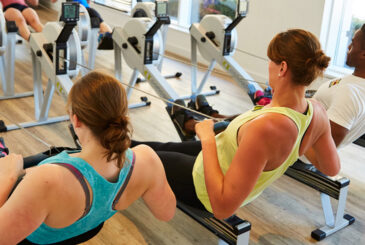Is the future virtual for rowing? With the asensei British Rowing Virtual Championships taking place on 11 September, Araminta Cullinane from Junior Rowing News explores the virtual landscape
To say that the past year has given us ample opportunity to assess how rowing can be adapted would be an understatement. Of course, now that some degree of normality has returned, the last thing most people would want to think about is more (and this time, voluntary) change, but the truth is that rowing will have to adapt to keep ahead of the competition in the technological age.
Speaking of technology, indoor competition has been part of the sport for a while, but lockdown forced the powers that be to come up with a way of competing both on land, and without being in person. Last year, a slew of virtual competitions were born, with the British Rowing’s Virtual Championships being held again this year on Saturday 11 September with asensei as new title sponsor. The question now is are these events here to stay?
Virtual competitions becoming more common would solve several of rowing’s most significant drawbacks: they can be done from home, as we all showed last year, and with considerably less — and less expensive — equipment. This would make the sport much more accessible and means competitions could still happen when factors like weather and travelling complications prevent time on the water.
Infrequent competitions come with the territory of rowing, but more virtual competitions would also alleviate the dissatisfaction that comes with rowers rarely being able to show off their skills. As a result, coaches and athletes could keep better tabs on their competitions’ strengths and weaknesses which in turn could make the on-water races in the summer even more competitive and exciting.
As one of the few sports to offer a virtual element, where it’s possible to race against more people from different countries around the world, rowing’s future looks bright.
In particular, the brand Holofit boasts VR headsets for rowing machines, complete with, admittedly, Xbox 360-like graphics showing the first-person view from the seat of a single. It is also compatible with several brands of rowing machine, so although very new age, it’s not infeasible that this could be phased into training programmes in the coming years.
Who knows what weird and wacky inventions could be patented in the near future
It could even be deployed at the highest level of sport, with coxes enjoying more immersive visualisation sessions ahead of their Tideway races, helping them to find the fastest racing line every time. Could this type of technology begin to decide Boat Races?
Other innovations include the EXR app which simulates virtual races including the Head of the Charles in Boston. This new innovation is looking to eventually simulate mini virtual online side-on-side racing.
The Concept2 ErgRace App allows people anywhere in the world to take part in an online race. While we now have hybrid working, could this be the way we make more rowing events hybrid too?
Another popular innovation is ReSport – the online challenge provider creates online challenges with live leader-boards and live tracking maps enabling people to compete at a time and place that suits them.
I do not doubt that this would make hour-long slogs on the rowing machine more fun, and in a more casual sense, VR could also make rowing more enticing for younger juniors. The Fish Game on Concept2 machines is especially loved, so I’m sure any higher-tech updates to it would be just as well received.
Aside from that, who knows what weird and wacky inventions could be patented in the near future – whether their novelty will stick remains to be seen.
Watch this space!










